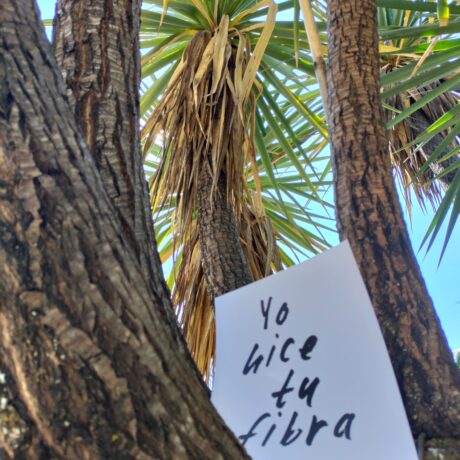Rana Plaza 10 years on: A decade of progress
24th April 2023 marks 10 years since Rana Plaza. During Fashion Revolution Week, we are #RememberingRanaPlaza and demanding that no one dies for fashion. As we reflect, we are both inspired by the progress made in the Bangladesh Ready-made Garment (RMG) sector and reminded of the scope of human and environmental issues yet to be addressed in the global fashion industry.
What happened at Rana Plaza?
On 24 April 2013, the Rana Plaza factory building in Bangladesh collapsed in a preventable tragedy. More than 1,100 people died and another 2,500 were injured, making it the fourth largest industrial disaster in history. Rana Plaza was not the first or last garment factory disaster and was a symptom of the common problems faced by producer countries worldwide. Rana Plaza further exposed the widespread lack of transparency across global fashion supply chains, and how a lack of visibility can ultimately cost lives. Without transparency, issues remain hidden and unresolved at their root.
It is not by coincidence, but by design, that within the global fashion industry, garment worker wages are artificially low and that brands continue to source from regions where it is impossible, difficult and/or unsafe for workers to form trade unions and bargain for greater rights. The global fashion industry has continually relied on voluntary commitments which have allowed brands to continue with business as usual. A lack of living wages, freedom of association, collective bargaining, health and safety and traceability continue due to poor progress on transparency in these areas. A critical first step toward accountability, therefore, is greater transparency.
View this post on Instagram
What is the International Accord?
The Bangladesh Accord on Health and Safety (now known as the International Accord on Fire and Building Safety) was signed just weeks after Rana Plaza and is a landmark agreement that brought together brands, retailers, trade unions and supplier factories to address building and fire safety in garment factories in Bangladesh. It was the first time that global fashion brands acknowledged their direct responsibility for factory conditions in their supply chains – and 192 fashion brands are currently signed up.
The International Accord is the first legally-binding brand agreement on worker health and safety in the fashion industry. It was formed with the understanding that voluntary measures alone are not enough to address issues of health and safety because they lack transparency, enforceability and assurance of meaningful representation of workers and trade unions. The Accord is unique in being supported by all key labour rights stakeholders in Bangladesh and internationally, and being legally binding. It is the most important agreement to date to keep garment workers safe.
The Accord has three main goals:
- Promoting a culture of workplace safety by training Safety Committees and encouraging workers to identify, address and monitor safety hazards at factories.
- Preventing fire, electrical, structural, and boiler safety accidents through inspections and remediation programs led by specialist, independent engineers.
- Providing a trusted avenue for workers to raise safety concerns through an independent complaints mechanism.
This year, we pay tribute to the joint efforts of all Accord stakeholders who have significantly contributed to safer workplaces for over 2 million garment factory workers in Bangladesh, especially the global trade unions representing garment workers who were at the forefront of this ground-breaking agreement. You can find a list of organisations to support at the end of this blog.
You can read more about the International Accord via Clean Clothes Campaign and watch the below video which celebrates the measurable achievements of the Accord:
What is the Pakistan Accord?
In Pakistan, unions have taken the example of the Bangladesh Accord and are working to adapt it to their own national circumstances. Starting in 2018, labour organisations in Pakistan have been campaigning for a Pakistan Accord on Fire and Building Safety.
The Pakistan Accord is a legally binding agreement between global unions, IndustriALL and UNI Global Union, and garment brands and retailers for an initial term of three years starting in 2023. The factory listing of these brands would cover approximately 300-400 facilities in Pakistan. The program in Pakistan will include key features from the 2021 International Accord.
35 global brands and retailers have now signed the Pakistan Accord. Fashion Revolution stands in solidarity with all organisations who are calling on major brands and retailers to sign the Pakistan Accord and demands the industry protects progress so that a disaster like Rana Plaza never happens again.
Rana Plaza could have happened anywhere, as it was a devastating outcome within an industry rife with human rights abuses and environmental degradation. This disaster exposed that a lack of transparency costs lives. Whilst 48% of major brands and retailers included in the Fashion Transparency Index are disclosing their first tier supplier lists, supply chains remain complex, fragmented, deregulated and opaque with half of brands scoring 0-2% overall in the Traceability section of the report.
How transparent is the fashion industry?
Since Rana Plaza, there has been greater scrutiny on the global fashion industry and pressure for brands and retailers to be more transparent. The Global Fashion Transparency Index is one tool that Fashion Revolution has developed to help bring about systemic change in the industry.
The Index was created in 2017, recognising that a lack of transparency costs lives and allows human rights and environmental issues to thrive, unaddressed.Transparency alone wouldn’t have prevented Rana Plaza but without it, it is impossible for companies to make sure human rights are respected, working conditions are safe and the environment is protected without knowing where their products are being made. The aim is for this information to be used by individuals, activists, experts, worker representatives, environmental groups, policymakers, investors and even brands themselves to examine what big fashion brands are doing, hold them to account and work to make change a reality.
Our findings highlight an increased level of transparency over the last 5 years. In 2017, just 32% of 100 brands reviewed disclosed their first tier manufacturing lists. In 2022, 48% of 250 brands included in the Index now disclose their first tier manufacturing lists. Furthermore, in 2017, 0% of brands reviewed disclosed their tier 3 supplier lists. In 2022, 12% out of 250 brands included in the Index now do. While this progress is encouraging, it begs the question, what is still being hidden?
Ten years after Rana Plaza, there is still much to be done in the global fashion industry. Find out how you can take action and support organisations working on the ground in Bangladesh below…
How can I take action?
If you are a citizen:
- Call on major fashion brands and retailers to sign the Pakistan Accord. You can show your support by signing this petition and can directly lobby brands to sign by demanding action on social media or via email. Here is a list of brands who have and haven’t signed.
- Sign the Good Clothes, Fair Pay campaign if you are an EU citizen and, whether you can sign or not, help spread the word by sharing our posts on Instagram (@goodclothesfairpay) and Twitter (@goodclotheseu).
- Ask #WhoMademyClothes? and #WhoMadeMyFabric?
- Sign and share the Manifesto for a Fashion Revolution ahead of Fashion Revolution Week 2023.
If you are a policymaker:
- Support better regulations, laws and government policies that require transparency and corporate accountability on environmental and human rights issues in the global fashion industry.
- Be more proactive at responding to ‘red flags’ and risk factors associated with labour exploitation and environmental damage in the global fashion industry.
- Read and listen to the viewpoints of workers, communities and experts in the Global Fashion Transparency Index to inform your policymaking activities. Note that the views presented here are not exhaustive and we recommend seeking out and speaking with other affected stakeholders.
If you are a major brand and retailer:
- Sign onto the International Accord.
- Sign onto the Pakistan Accord.
- Publish your supply chain right down to the raw material level as soon as possible, doing so in alignment with the open data standard, and uploading the list to the Open Supply Hub.
List of global organisations to support
The following organisations have been central to the development and adoption of the International Accord:
Trade Union Signatories of the Accord
Witness Signatories of the Accord
- Worker Rights Consortium
- Clean Clothes Campaign
- Maquila Solidarity Network
- International Labor Rights Forum
International Accord Steering Committee Chair
Other organisations supporting garment workers in Bangladesh
- Bangladesh Worker Solidarity Centre
- National Garment Workers Federation
- Labour Behind the Label
- Awaj Foundation
- Remake
Header image: J Williams on Unsplash








